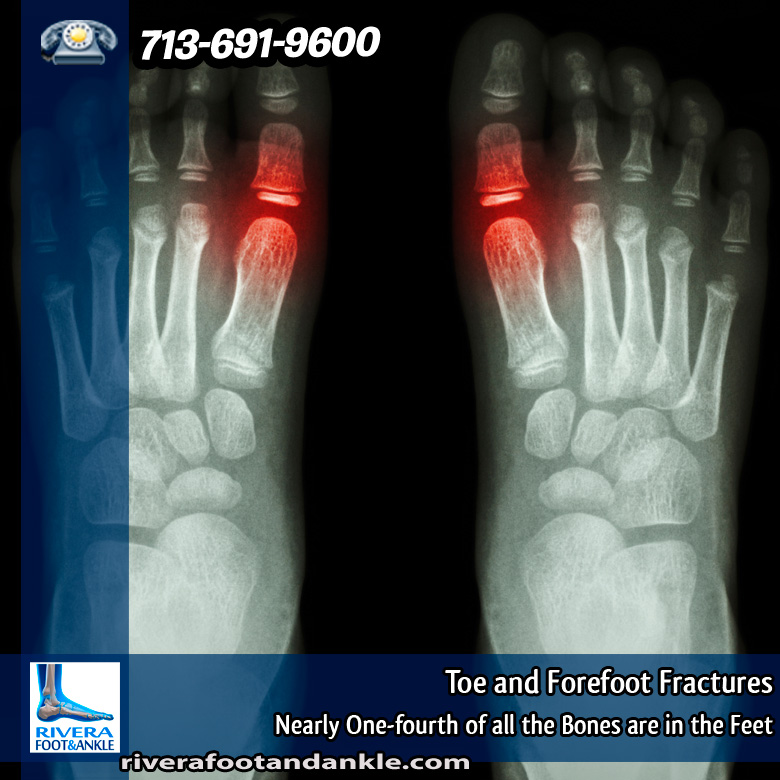Toe and Forefoot Fractures
Nearly One-fourth of all the Bones are in the Feet
Nearly one-fourth of all the bones in your body are in your feet, which provide you with both support and movement. A broken (fractured) bone in your forefoot (metatarsals) or in one of your toes (phalanges) is often painful but rarely disabling. Most of the time, these injuries heal without operative treatment.
Types of fractures
Stress fractures frequently occur in the bones of the forefoot that extend from your toes to the middle of your foot. Stress fractures are like tiny cracks in the bone surface. They can occur with sudden increases in training (such as running or walking for longer distances or times), improper training techniques or changes in training surfaces. Most other types of fractures extend through the bone. They may be stable (no shift in bone alignment) or displaced (bone ends no longer line up). These fractures usually result from trauma, such as dropping a heavy object on your foot, or from a twisting injury. If the fractured bone does not break through the skin, it is called a closed fracture.
Several types of fractures occur to the forefoot bone on the side of the little toe (fifth metatarsal). Ballet dancers may break this bone during a misstep or fall from a pointe position. An ankle-twisting injury may tear the tendon that attaches to this bone and pull a small piece of the bone away. A more serious injury in the same area is a Jones fracture, which occurs near the base of the bone and disrupting the blood supply to the bone. This injury may take longer to heal or require surgery.
Top of page
Symptoms
Pain, swelling, and sometimes bruising are the most common signs of a fracture in the foot. If you have a broken toe, you may be able to walk, but this usually aggravates the pain. If the pain, swelling, and discoloration continue for more than two or three days, or if pain interferes with walking, something could be seriously wrong; see a doctor as soon as possible. If you delay getting treatment, you could develop persistent foot pain and arthritis. You could also change the way you walk (your gait), which could lead to the formation of painful calluses on the bottom of your foot or other injuries.
Source: orthoinfo
RIVERA FOOT & ANKLE: At Orlando H.Rivera DPM, our priority is to deliver quality care to informed patients in a comfortable and convenient setting. When you have problems with your feet, you need to turn to a podiatrist who listens and responds… an experienced doctor who knows the field and can effectively diagnose and treat your needs… a friendly physician who counsels you on the best ways to maintain and improve your health. Our physician(s) meet all these criteria. Plus, you benefit from a dedicated team of trained professionals who give you the individualized attention you deserve.
Advanced Foot & Ankle Specialist
Keywords: Foot and Ankle, Dr. Orlando Rivera, Advanced Foot & Ankle Specialist, Foot and Ankle Podiatry, Houston Food & Ankle Surgical, Treatment of Foot and Ankle, Foot & ankle specialists, Podiatrist in houston, podiatrist in houston, Orlando H.Rivera DPM, Houston Foot Doctor, Food and Ankle Surgeon Houston, Ankle and Foot Specialist Houston, Podiatrist Houston, Foot Pain Houston




